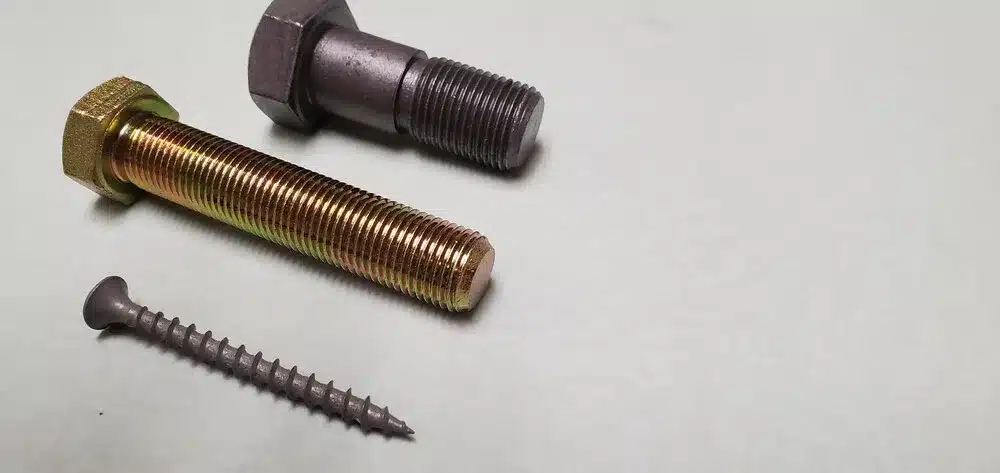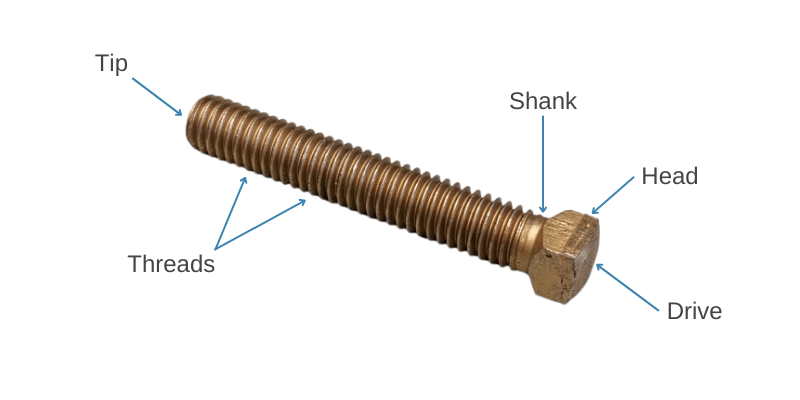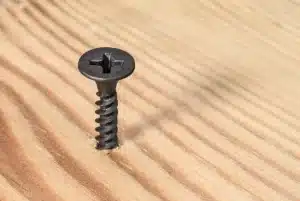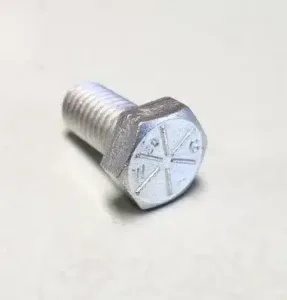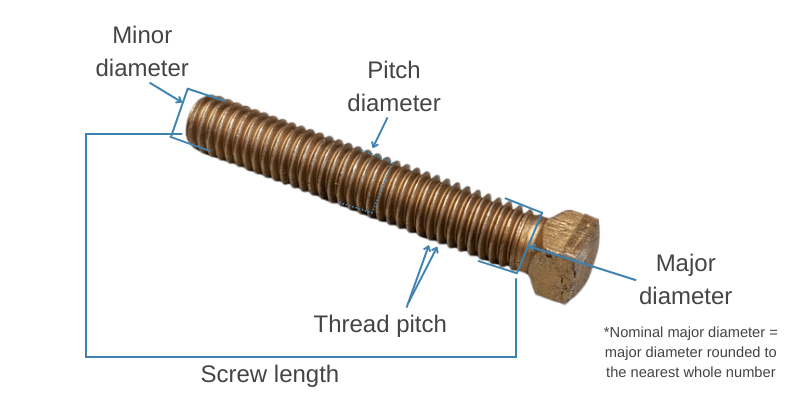Whatever your engineering or manufacturing application is, it’s likely that you’re well-acquainted with screws of various types. However, as often as you may have used screws, you may still be unfamiliar with their components.
Understanding key screw components is essential when you have to decide which type of screw to employ for a specific function. And when there are so many options available, that understanding becomes even more important.
This article will help, as it outlines the anatomy of a screw and describes the various types, styles, and functions of each part.
The 5 Key Parts of a Screw
Screws consist of five key components: head, shank, threads, drive, and tip. Below is a diagram that shows where each component is located, followed by descriptions of their core functions.
1. Head
The head of a screw is its topmost part and serves as the primary contact point for tools during installation. There are many different types of screw heads and drive types (which we’ll cover later in the article).
You can also categorize screw heads by being countersunk or non-countersunk. Countersunk is when the head rests evenly with the material surface after installation. Non-countersunk is when the head protrudes the material surface after installation, leaving the head exposed.
Regardless of which you select, your choice of screw head is critical, as it determines the tool required for installation/removal and impacts efficiency, torque transmission, and installation/removal accessibility.
2. Shank
The shank refers to the main body of the screw, which connects the head to the tip. It has a pivotal role in determining the screw’s load-bearing capacity and resistance to shear forces. The shank’s length and diameter vary depending on the application, ensuring optimal strength while considering space constraints. Additionally, the shank may feature unthreaded portions, known as the shoulder or body, for specialized applications.
3. Threads
Threads are the distinctive ridges spiraling around the shank of a screw, responsible for creating a strong and secure connection. They engage with the mating surface, generating friction and preventing the screw from loosening under load.
There are various standards used to define thread characteristics. In the United States, we most commonly use the Unified Thread Standard (UTS), which is controlled by the American Society of Mechanical Engineers (ASME). UTS dictates standards only for inch threads, not metric.
Some of the most popular UTS thread series are UNC, UNF, and 8-UN. They each have different thicknesses — from fine to coarse — and, therefore, different performance capabilities.
Want to read more about fastener threads? Jump to this article.
4. Drive
The drive is what determines which type of screwdriver or fastening tool must be used to install and remove a screw. There are two main types:
- Internal drives require a tool that inserts into the screw head, like a screwdriver. Phillips, slotted, and socket heads are some internal drive examples. Here’s a photo of a wood screw with one. We don’t manufacture these here, but it’s a good example of an internal drive:
- External drives require a tool that wraps around the screw head, like a wrench. Hex, hex flange, and square heads are some external drive examples. Here’s a photo of one:
5. Tip
Located at the opposite end of the head, the tip, or point, initiates contact with the material being fastened. Different point designs cater to specific applications.
For instance, self-drilling tips enable screws to penetrate metal without the need for pre-drilling, saving time and effort. Self-tapping tips create their own threads in materials like wood or plastic. Sharp tips are ideal for precise placement in delicate applications.
Some screws don’t have tips or points but rather a blunt end. These are more common in the manufacturing space and are generally used with a pre-tapped hole.
Other Good-to-Know Information About Screws
Besides the anatomy of a screw, there are a few other things to keep in mind before deciding what is best for your application.
The Difference Between a Screw and a Bolt
It’s common for people to misunderstand the differences between bolts and screws or not realize that one exists in the first place. But there are differences — it just depends on who you ask.
In this previous article of ours, we discuss one government agency’s opinion on the matter and give some qualifying criteria that set the fasteners apart.
Measuring Screws
The key to measuring screws is knowing the key components and measurement terminology. If you’ve read through this article up until now, you’ve already familiarized yourself with one set of that information.
Next up is measurement terminology. Here’s the most important of it.
- Screw length: The distance from the flat part of the head to the point or blunt end of the screw.
- Major diameter: The distance from the crest (top) of the thread on one side to the crest of the thread on the other side.
- Minor diameter: The distance from the root (bottom) of the thread on one side to the root of the thread on the other side.
- Pitch diameter: The diameter of a theoretical cylinder that exists halfway between the major and minor diameters.
- Nominal major diameter: The estimated major diameter. It’s just the major diameter, rounded up or down to the nearest whole number.
- Thread pitch: The distance from a point along one thread to the same point on the next thread.
Learn more about this terminology and how to measure screws in this article.
For Custom Screws Manufactured to Your Specs, Contact Us.
Looking for a special screw? We’re here to help. Check out our custom fastener manufacturing capabilities sheet to see if your screw specifications are in our wheelhouse, then request a quote from us to get your project started.
